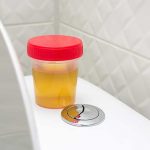Prescription opioid drugs like oxycodone, hydrocodone, hydromorphone, and oxymorphone play a critical role in modern healthcare by managing both acute and chronic pain.
However, oxymorphone and other opioids carry a high risk of abuse and addiction.
What Is Opana?
Opana is a brand-name pain medication produced by Endo Pharmaceuticals that contains the opioid drug oxymorphone hydrochloride.
Opana is a schedule II controlled substance (considered to have a high potential for abuse as well as physical dependence and addiction). In legitimate medical use, it is only available with a prescription provided by a licensed healthcare professional.
Opana is made as a round, immediate-release tablet prescribed for the treatment of moderate to severe pain. It is taken by swallowing on an empty stomach.
Opana ER, a long-acting extended-release formulation of the same drug intended for around-the-clock management of severe pain, has not been sold in the United States since 2017 due to its high risk of tampering and drug abuse.
Generic reformulations of Opana are available.
Opana Warnings
This pain management should not be used by those who:
- are allergic to it
- are pregnant or breastfeeding
- have severe asthma or breathing problems
- have a gastrointestinal blockage
- have liver disease
Certain dangerous or fatal drug interactions may occur if Opana is abused with other CNS depressants, including alcohol and muscle relaxants.
Opana Abuse
While oxymorphone offers medical analgesia, it and many other opioid pain relievers are misused to achieve a euphoric, heroin-like high.
Individuals may take oxymorphone without a prescription, take it in higher doses for a stronger effect, or tamper with oxymorphone tablets in order to intensify the experience even more.
This can involve chewing on tablets for faster absorption or crushing them and taking them through inhalation (snorting), smoking, or injection.
Side Effects Of Opana Abuse
While all opioid drugs are associated with certain side effects, misusing opioid analgesics like oxymorphone to get high can put you at risk for serious side effects including life-threatening overdose, dependence, and addiction.
Common side-effects of oxymorphone use can include:
- dizziness
- drowsiness
- headache
- tiredness
- stomach pain
- nausea
- vomiting
- constipation
Opana Overdose
Oxymorphone can trigger overdoses on its own or in combination with other substances, including other opioids/opiate drugs, alcohol, benzodiazepines, and stimulants.
Opioid overdose signs and symptoms may include:
- blue-tinted fingertips and lips
- gasping or impaired breathing
- slurred speech
- lack of coordination
- severe sedation
- mental confusion
- cold clammy skin
- seizures
Opioid-related breathing difficulty (respiratory depression) is the key risk associated with opioid overdose and can rapidly cause brain damage or death.
If you suspect an opioid overdose has occurred, give the victim naloxone (an over-the-counter opioid receptor antagonist and antidote) if available, and call for immediate medical assistance
Opana Tolerance & Dependence
Opioid dependence is a natural process that occurs as the body comes to tolerate and adjust to the presence of an opioid drug like oxymorphone over a period of time.
The drug will have less effect and you may need to take more to experience the same level of pain relief or euphoria as a result.
While dependence develops with any routine opioid use, it tends to form more quickly and severely when opioid medications are abused in higher doses without valid medical need.
Opana Withdrawal
If you attempt to reduce your dosage or stop using oxymorphone after you develop dependence, you will likely experience temporary opioid withdrawal symptoms that can range from mild to severe.
Common oxymorphone withdrawal symptoms can include:
- drug cravings
- sweating
- chills
- teary eyes
- yawning
- elevated blood pressure
- Irregular heart rate
- anxiety
- trouble sleeping
- muscle, bone, or bodily pain
- nausea, vomiting, or diarrhea
Acute symptoms tend to last for about five days and are not typically life-threatening. However, anyone attempting oxymorphone withdrawal is strongly urged to do so with medical support and assistance available through a professional medical detox program.
Opioid Use Disorder
Oxymorphone carries a high risk of addiction, which is defined as a condition of chronic, relapsing, compulsive use of a substance despite the evident harm it causes.
Opioid addiction can lead to a variety of physical, mental, and behavioral effects, including:
- liver disease
- increased risk of hepatitis and other infections
- paralytic ileus and bowel dysfunction
- social isolation
- unstable mood
- mental health changes, including depression, anxiety, and memory dysfunction
- neglected self-care, including poor nutrition and personal hygiene
- neglected personal obligations
- financial hardship
- arrest and incarceration
- loss of motivation and passion
- inability to feel pleasure during normal, healthy activities
Opana Addiction Treatment
While recovery from opioid addiction is often challenging, healthcare providers have developed a variety of effective interventions and treatment options, including prescription drugs that can help reduce withdrawal symptoms and cravings to support the recovery process.
If you would like to learn more about different detox and addiction treatment options, please contact Northeast Addictions Treatment Center today.
Frequently Asked Questions
How Much Does Opana Cost On The Street?
Opana typically costs about $2 per milligram. Standard Opana doses and their prices include:
- 5mg ($10)
- 7.5mg ($15)
- 10mg ($20)
- 15mg ($30)
- 20mg ($40)
- 30mg ($60)
- 40mg ($80)
Learn more about Opana Street Value & Cost
How Long Does Opana Stay In Your System?
Opana (oxymorphone) is an opioid pain medication that can stay in your system for about 2.5 days. However, when it is metabolized, the liver creates compounds that can be detected on blood, saliva, urine, and hair follicle tests.
Blood tests have the shortest window of detection (up to 24 hours) and hair tests provide the longest window of detection (up to 3 months).
To learn more, read How Long Does Oxymorphone Stay In Your System?
Is Oxymorphone An Opioid Or Opiate?
Oxymorphone is classified as an opioid analgesic schedule II drug. It is a prescription opioid known as a semi-synthetic opioid analgesic and is primarily used for pain relief.
To learn more, read Is Oxymorphone An Opioid Or Opiate?
Sources
Written by
Northeast Addition Editorial Team
©2024 Northeast Addition Center | All Rights Reserved
This page does not provide medical advice.



